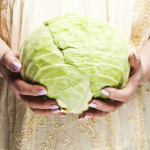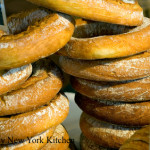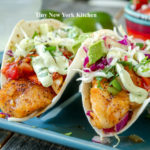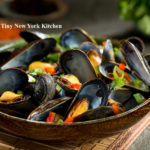Paleo Diet
The Paleo Diet (short for Paleolithic) is fashioned around the eating habits and available foods of our hunter-gatherer ancestors. These ancestors had to nourish themselves with the meat, fish, fruits, vegetables, nuts, and fats available to them in nature. With the benefit of large supermarkets, it’s easy today to mimic these foods in wider variety. Specific recommendations for eating Paleo will vary; however, the main ideas are the same: Reduce the risk of debilitating diseases and optimize health by eating whole, fresh, unprocessed foods and avoid foods that were not available prior to the advent of modern agriculture.
Research studies looking at the Paleo Diet have noted that eating a Paleo Diet for a short term improved the glucose control and lipid profiles in people with type 2 diabetes, compared to eating a diet containing low-fat dairy, moderate salt intake, whole grains, and legumes. Additional research indicates similar results may be possible in people without type 2 diabetes as well. The Paleo diet may result in higher levels of satiety (fullness) throughout the day when compared with a low-fat, low-calorie diet.
Paleo Do’s
Eat plenty of non-starchy vegetables and fruits.
Make fresh meat, poultry, fish, and seafood your primary sources calories.
Avoid highly processed meats that contain preservatives, artificial flavors, and sugar, such as some sausages, bacon, deli meats, and smoked fish products.
Consume nuts and seeds.
Use coconut oil, grass-fed butter, olive oil, avocado oil, nut and seed oils, and animal fats, such as goose fat or duck fat, for cooking and eating.
Balance the intake of acid-producing foods (meats, fish, salt, and cheese) with base-producing foods (fruits and vegetables) for optimal health.
Use sea salt to season foods, but try to decrease sodium intake in general.
Paleo Don’ts
Consume highly processed packaged foods.
Get heavy handed with the salt shaker.
Eat grains of any kinds. Quinoa, bulgur, rice, wheat, bread, pasta, etc., are all out.
Consume sugar (including honey and maple syrup), sweets, candy, or desserts.
Use artificial sweeteners, such as monk fruit extract, stevia, NutraSweet or Equal (aspartame), Splenda (sucralose), or sugar alcohols, such as xylitol, sorbitol, or maltitol.
Eat legumes, beans, peas, lentils, or soy, or foods make from soybeans.
Use canola or soybean oils or consume hydrogenated oils (trans fats).
Consume dairy, with the exception of fermented dairy or raw milk cheese on occasion.
“Work With What You Got!”
© Victoria Hart Glavin Tiny New York Kitchen © 2016 All Rights Reserved
Buttered Cabbage
Civil War deprivations did not stop women from sharing recipes (receipts) with one another. This recipe for Buttered Cabbage was published in Godey’s Lady’s Book in 1862.
“Boil the cabbage with a quantity of onions, then chop them together, season with pepper and salt, and fry them in butter. It is a rather homely, but savory dish, and frequently used either with fried sausages laid over it or as an accompaniment to roast beef, and forms part of bubble and squeak.”
“Work With What You Got!”
© Victoria Hart Glavin Tiny New York Kitchen © 2016 All Rights Reserved
Japanese Pantry
Add these Japanese items to your pantry and you’ll reach for them again and again. Some of these items are common enough that you can find them at Whole Foods or your local health food store. Others might require a trip to an Asian grocery store or an online order. Your efforts will be richly rewarded.
Sake
You don’t need to spend a lot of money on fancy sake for cooking, but a decent bottle is tastier and more complex than cooking sake.
Kombu
This mineral rich dried kelp is what gives dishes depth. The sheets should be sturdy with fine sea salt on the outside. Look for labels that say “kombu.”
Bonito Flakes
Dried, fermented, and smoked skipjack tuna (also known as katsuobushi) that is the yin to kombu’s yang in dishes. Quality ranges widely. You do get what you pay for here.
Rice Vinegar
Avoid seasoned rice vinegar, which has sweeteners and other additives in it. Choose a brand that lists rice and water as the only ingredients.
Miso
It encompasses a range of fermented soybean pastes, from younger fresh-tasting white to long-aged, funky red. The latter, which is mellow and sweet, is the best intro.
Mirin
Brewed from sticky rice, this cooking wine is sweeter and less alcoholic than sake. Pick one made with sugar rather than glucose or corn syrup because you can taste the difference.
Togarashi & Sansho
Make fruity togarashi chile powder your new Aleppo. Sansho, made from the husks of sansho peppercorns, lends tongue-tingling anise notes.
Short-Grain White Rice
With its pearly grains and subtle flavors, koshihikari is the crème de la crème of Japanese short-grain rice.
Usukuchi Soy
Lighter, thinner, and saltier than standard soy, usukuchi is perfect for seasoning dishes like yosenabe (hot pot) without darkening the color too much.
“Work With What You Got!”
© Victoria Hart Glavin Tiny New York Kitchen © 2016 All Rights Reserved
Cooking With Lemons
Lemons are a chef’s secret ingredient. Most chefs will tell you that acidity elevates any dish. There is no need to get all fancy by using twenty year old balsamic vinegar. Just finish most of your dishes with a humble squeeze of lemon juice. Most line cooks have quart containers of wedges at their stations for juicing in the moment. Why lemon? Aside from the fact that you can always find one, you’ll taste what it does to the food, not the lemon itself. Along with salt and pepper, it’s all you need to season everything from simple pastas to grilled fish, roasted meats, and sautéed vegetables, as well as pan sauces, grain salads, and even run of the mill lentil soup. In your own kitchen cut lemon wedges ahead of time, then squeeze as you cook for the brightest flavor.
“Work With What You Got!”
© Victoria Hart Glavin Tiny New York Kitchen © 2016 All Rights Reserved
Lucky Foods To Ring In The New Year
Many cultures believe that some foods are lucky and prepare them on New Year’s to ensure good fortune throughout the upcoming year.
Bagels & Doughnuts. Round foods, like bagels and doughnuts, are a great way to start the day and also symbolize coming full circle. As the year is coming to an end, it’s a good reminder that the New Year is about to begin.
Noodles. In China and Japan, long noodles represent longevity, BUT only if you don’t cut or break the noodles. You may want to make some soba noodles in a nice broth for a New Year’s lunch.
Lentils. Lentils resemble coins and plump when you cook them, which symbolizes growing wealth. Pork sausage cooked with lentils (Cotechino Con Lenticchie) Is a traditional New Year’s dish in Italy.
Fish. Whole fish (head to tail) is said to give you good luck from the beginning of the year to the very end of the year. Roasting a whole fish not only keeps it moist, but also adds extra flavor.
Pork. Pigs typically root forward while planting their feet in the ground. This signifies moving forward. In Spain it is traditional to prepare pork chops with grapes. It is customary to eat 12 grapes at the stroke of midnight in order to bring prosperity in each of the coming months.
Corn. The color of gold, which indicates a year of riches. You may want to make a cornbread to go with your New Year’s meal.
Collard Greens & Black Eyed Peas. This is a traditional Southern combination. The greens look like paper money and the black-eyed peas resemble coins. This dish is not only delicious, but also healthy.
Bundt Cake. Like bagels and doughnuts, a round Bundt cake is a delicious reminder that every new beginning comes from some other beginning’s end.
Don’t Be Greedy. While it’s tempting to eat as much of these “lucky” foods that are thought to give you the most prosperous year yet, it’s important not get too greedy. Leaving food on your plate after midnight is associated with a fully stocked pantry in the New Year.
Tiny New York Kitchen Wishes You And Your Family A Very Healthy & Happy New Year!
“Work With What You Got!”
© Victoria Hart Glavin Tiny New York Kitchen © 2015 All Rights Reserved
We At Tiny New York Kitchen Wish You And Your Family A Very Healthy & Happy New Year!
Tiny New York Kitchen Wishes You & Your Family A Very Merry Christmas!
Happy Sunday! The Fourth Candle On The Advent Wreath Is Lit. Christmas Is Nearly Here.
New York City is a wonderful place to be during the Christmas season. Store windows are decorated and the streets are a bustle with shoppers and tourists.















